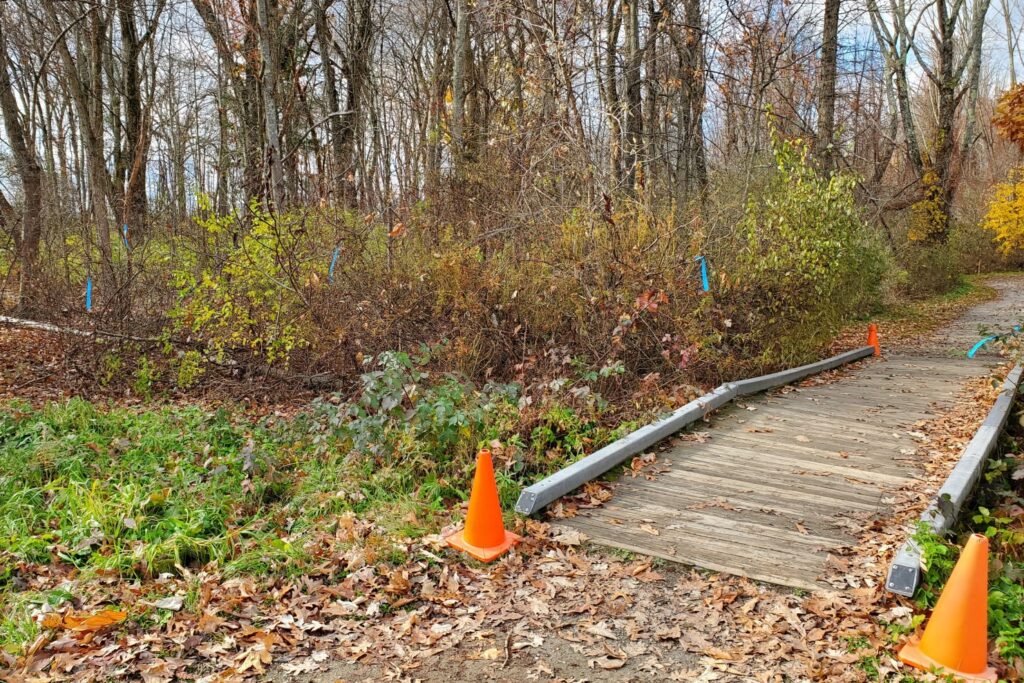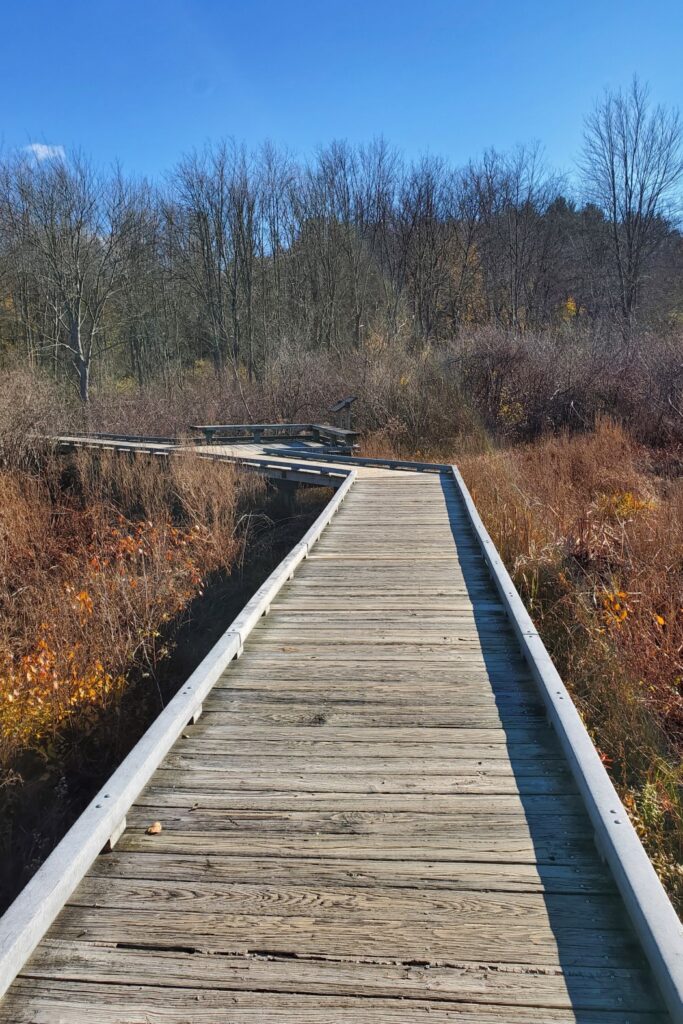
Written by Ada Fox, Biological Science Technician at Minute Man National Historical Park
Have you noticed little blue flags in and around the wetlands of the Battle Road Trail at Minute Man National Historical Park? The walking trail covers over five miles, with some areas traversing wetlands. Boardwalks were constructed to allow visitors to fully experience the areas and are now in need of replacement. In order to proceed with construction, the team at Oxbow Associates (see image above) has been helping the park update delineation maps in preparation for boardwalk replacement. The blue hanging flags show the boundary of the wetland to protect it during construction.
A wetland is an important ecosystem that is usually defined as the land that transitions from upland to aquatic. There are different types of wetlands, but the main types you’ll find at Minute Man are forested and shrub swamps. These types of swamps are dominated by woody plants and are seasonally or temporarily flooded. Common swamp trees found at the park include red maple, pin oak, and eastern hemlock, along with shrubs such as sweet pepperbush, highbush blueberry, speckled alder, and silky dogwood.
There are many functions of wetlands with one of the most important being flood protection – they absorb extra water like a sponge. They also can capture nutrient-rich soils from floodwaters, and that provides great growing conditions for various plants, adding to the biodiversity of an area. The fertile soil is also why wetlands were drained and turned into farmland when the land was first settled. In addition to being like a sponge, wetlands are like water treatment plants. They filter the water through plants that will absorb any chemicals, like nitrogen, that might be in the water and anything that isn’t absorbed will settle to the bottom.
Swamps and other types of wetlands provide many benefits to wildlife and humans. It’s important to protect and maintain the wetlands we have as they play a great role in maintaining balance in the ecosystem.
Ada Fox is in her second season at Minute Man NHP with the Resource Management team and mainly works to control invasive species in the park.
Image above by Ada Fox, from left to right, clockwise: Brian Butler of Oxbow Associates using a soil auger to determine where the wetlands begin, last of the fall color at the Vernal Pool trail boardwalk.


